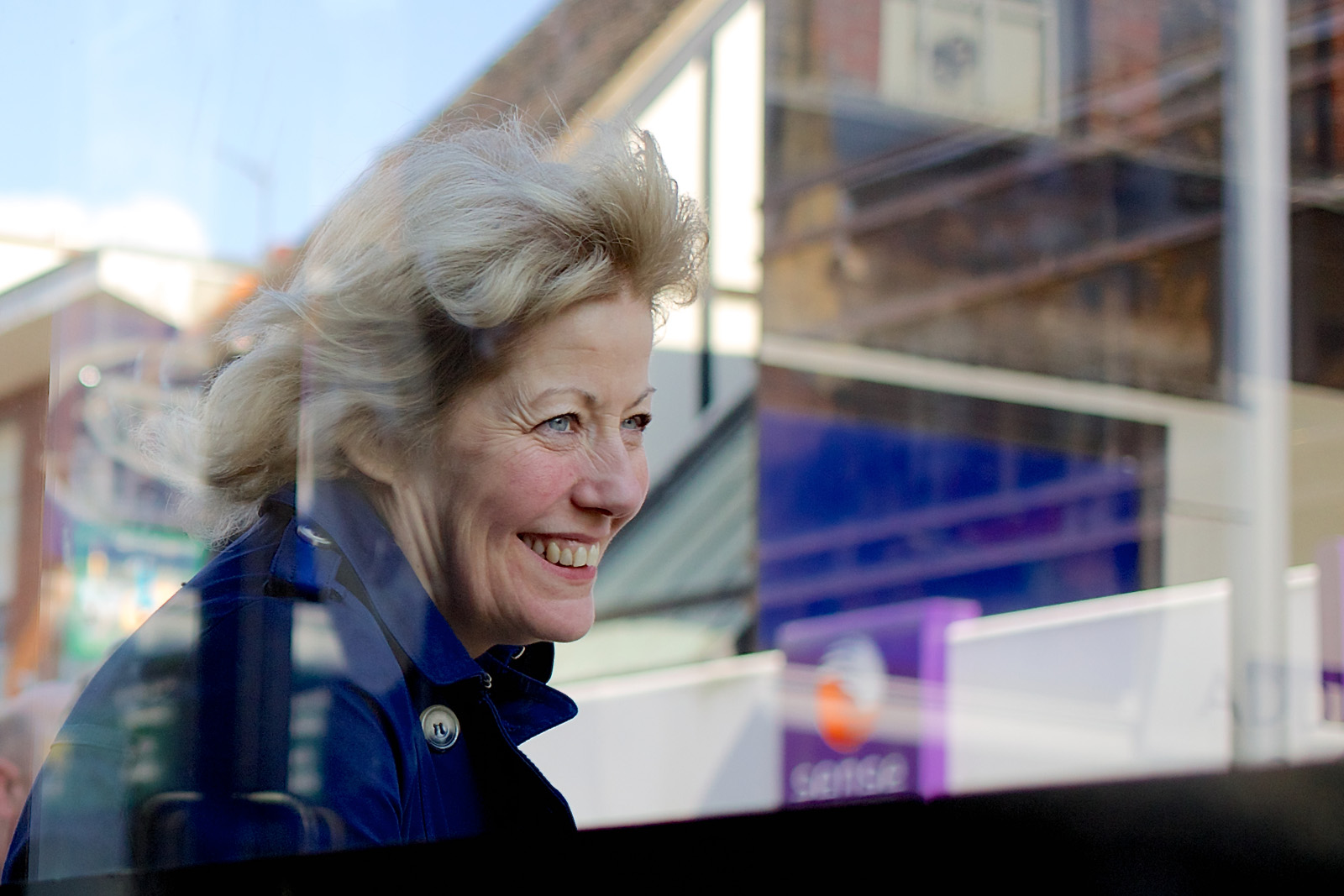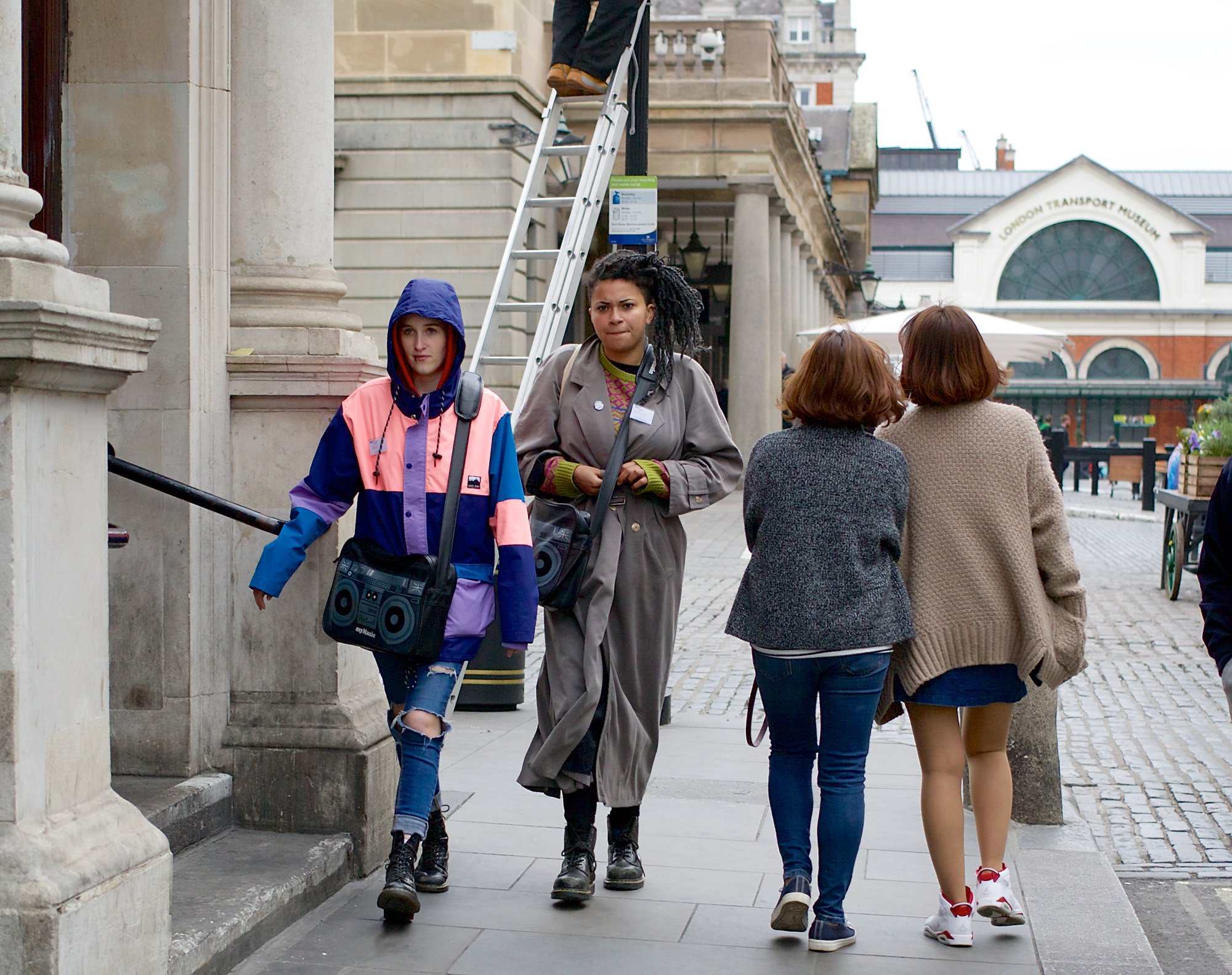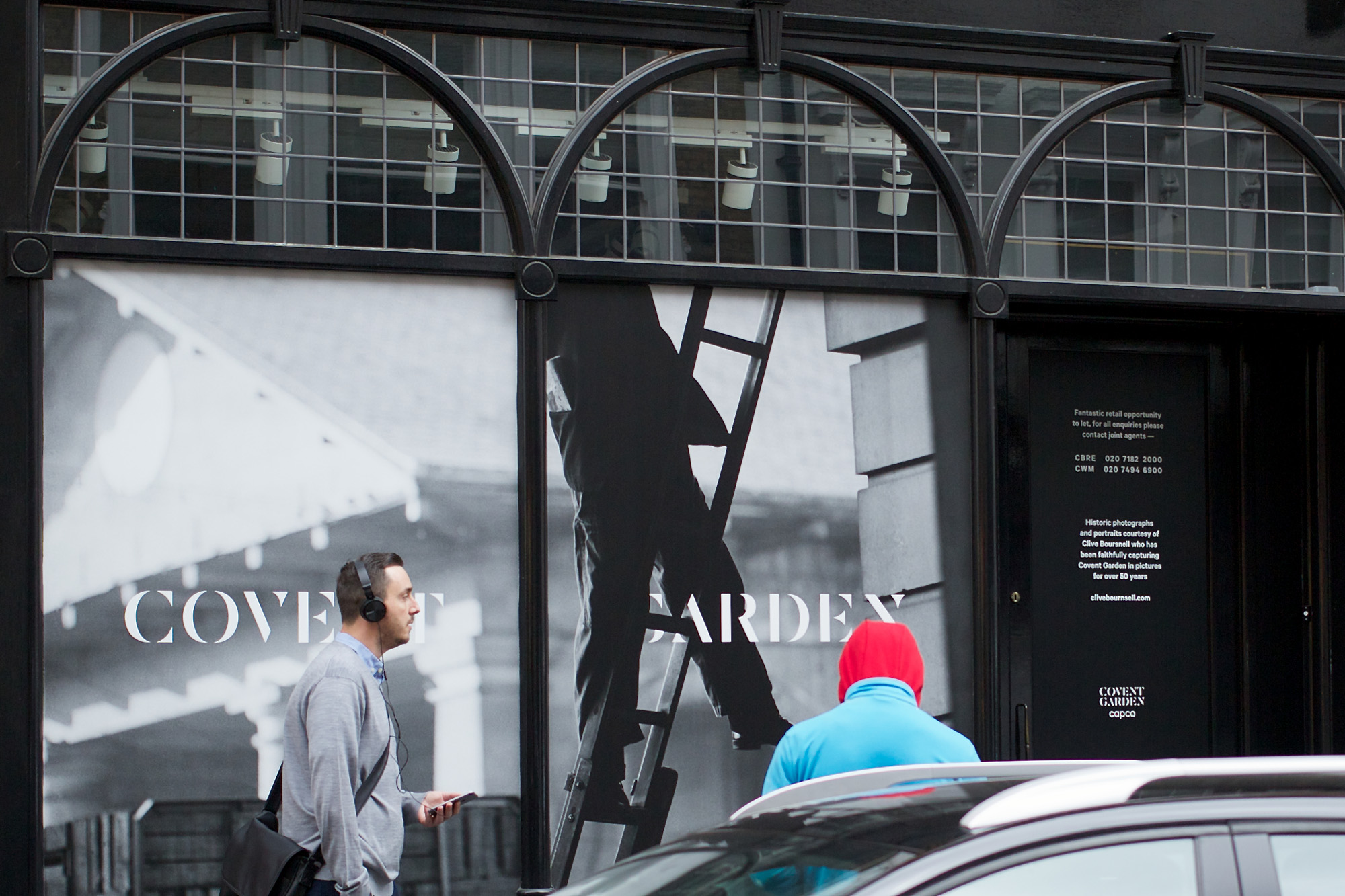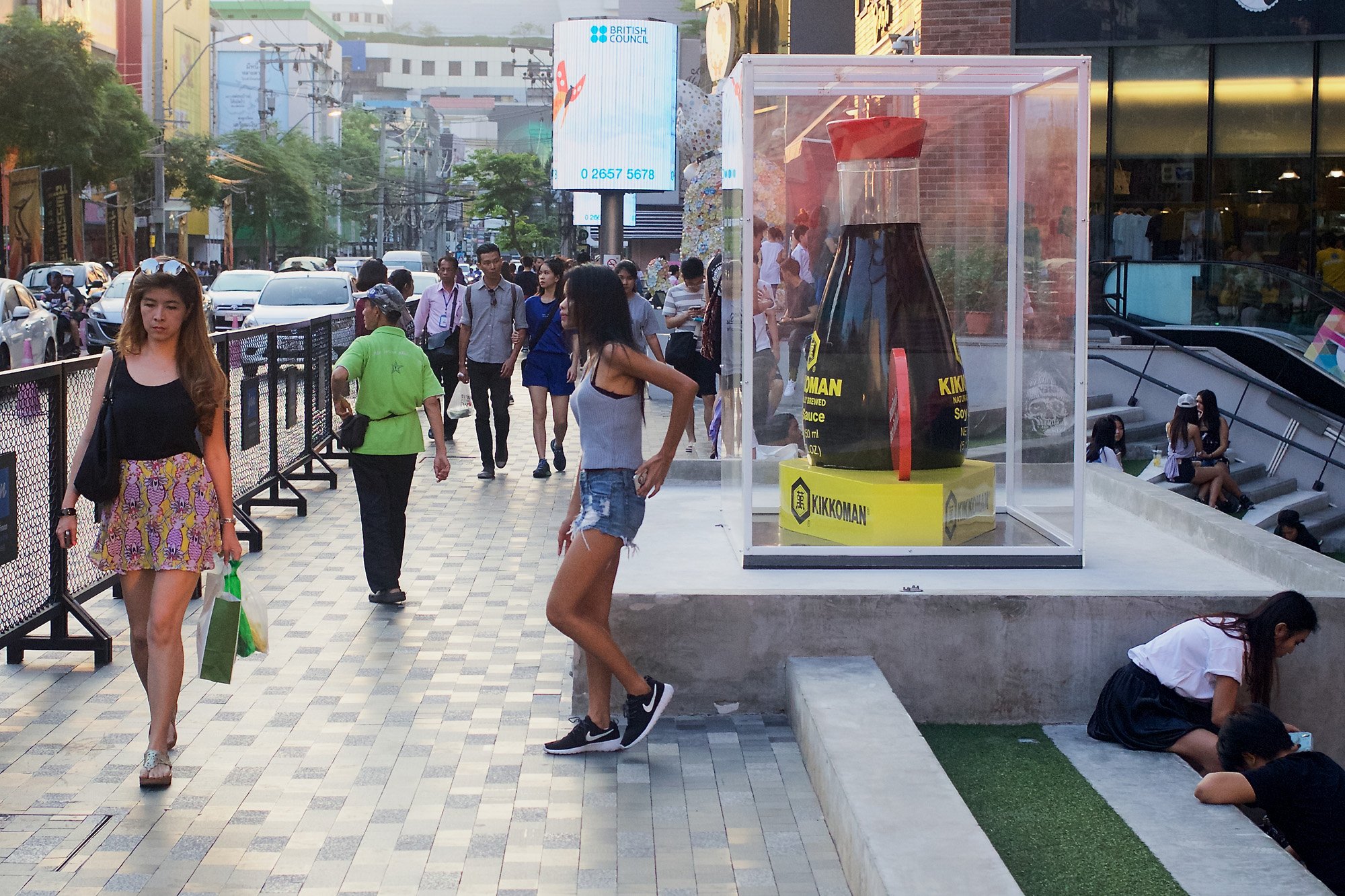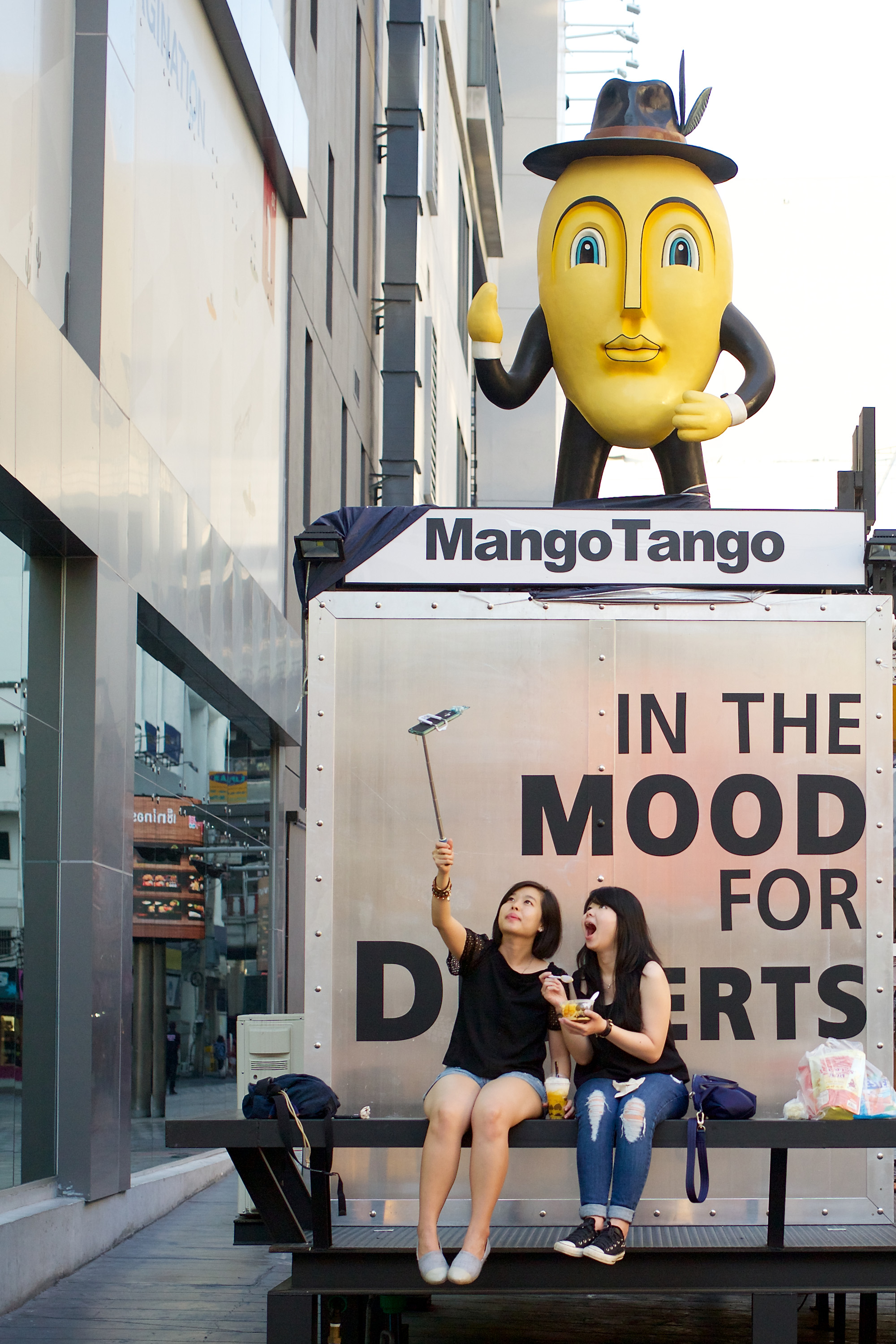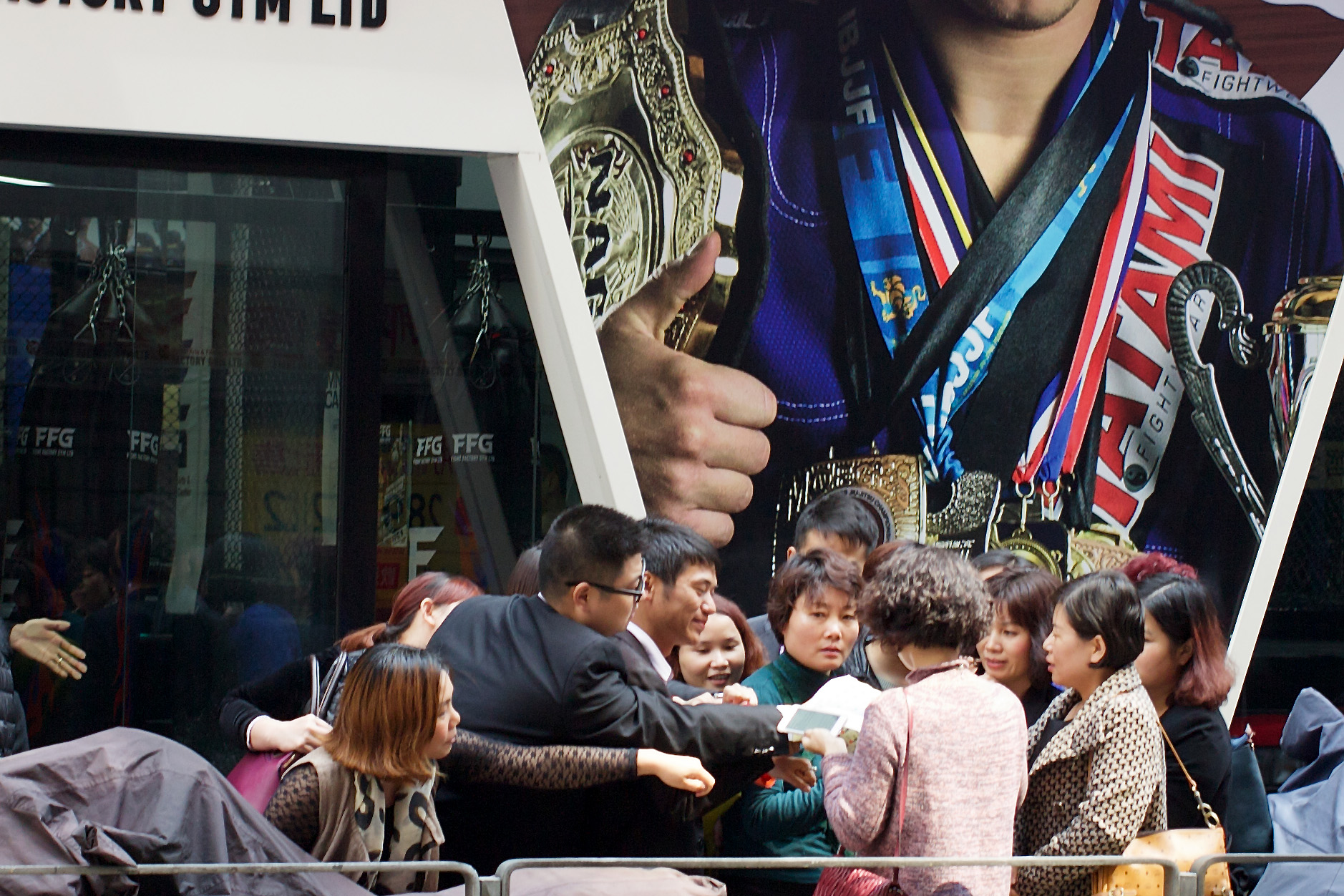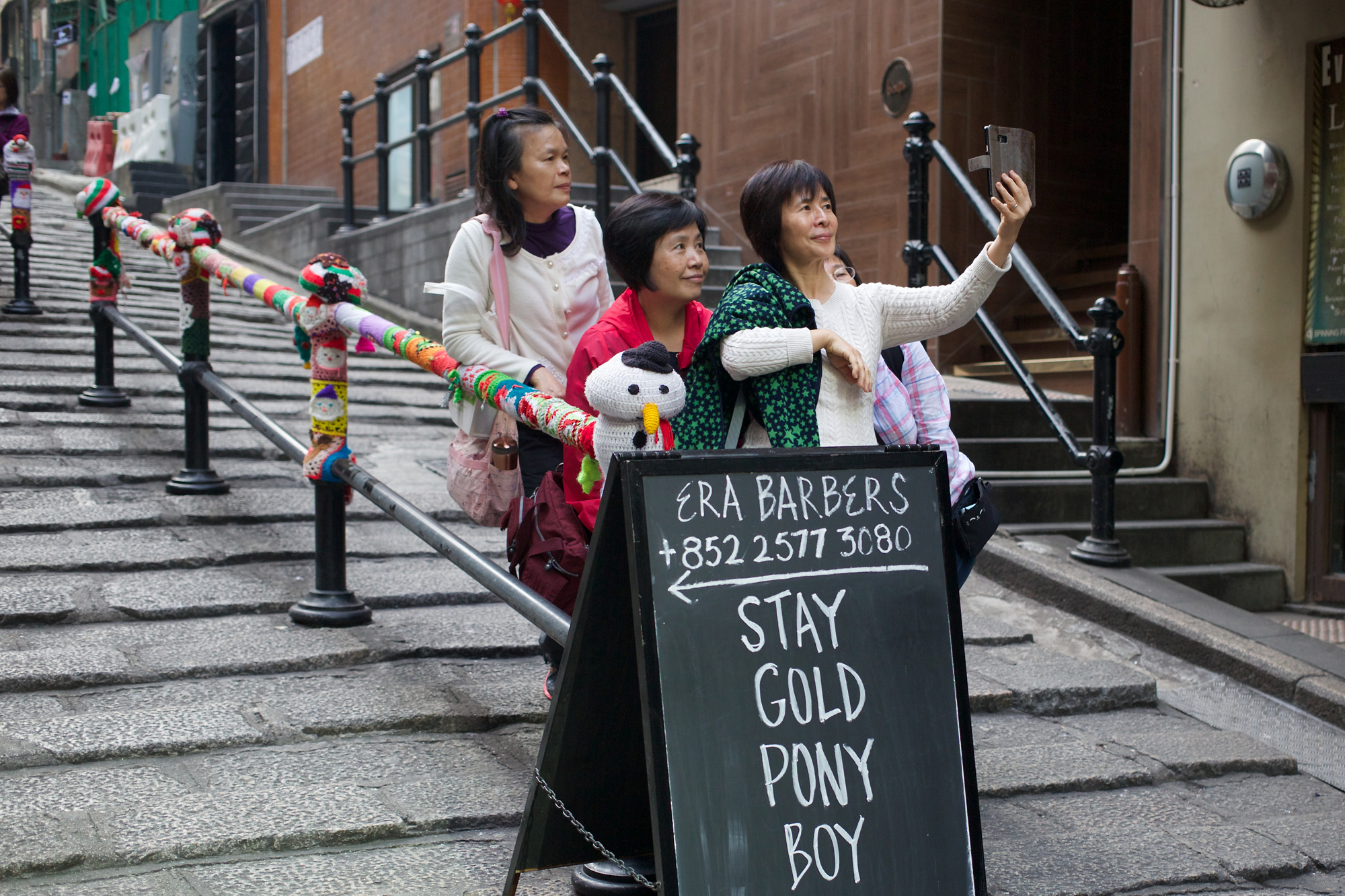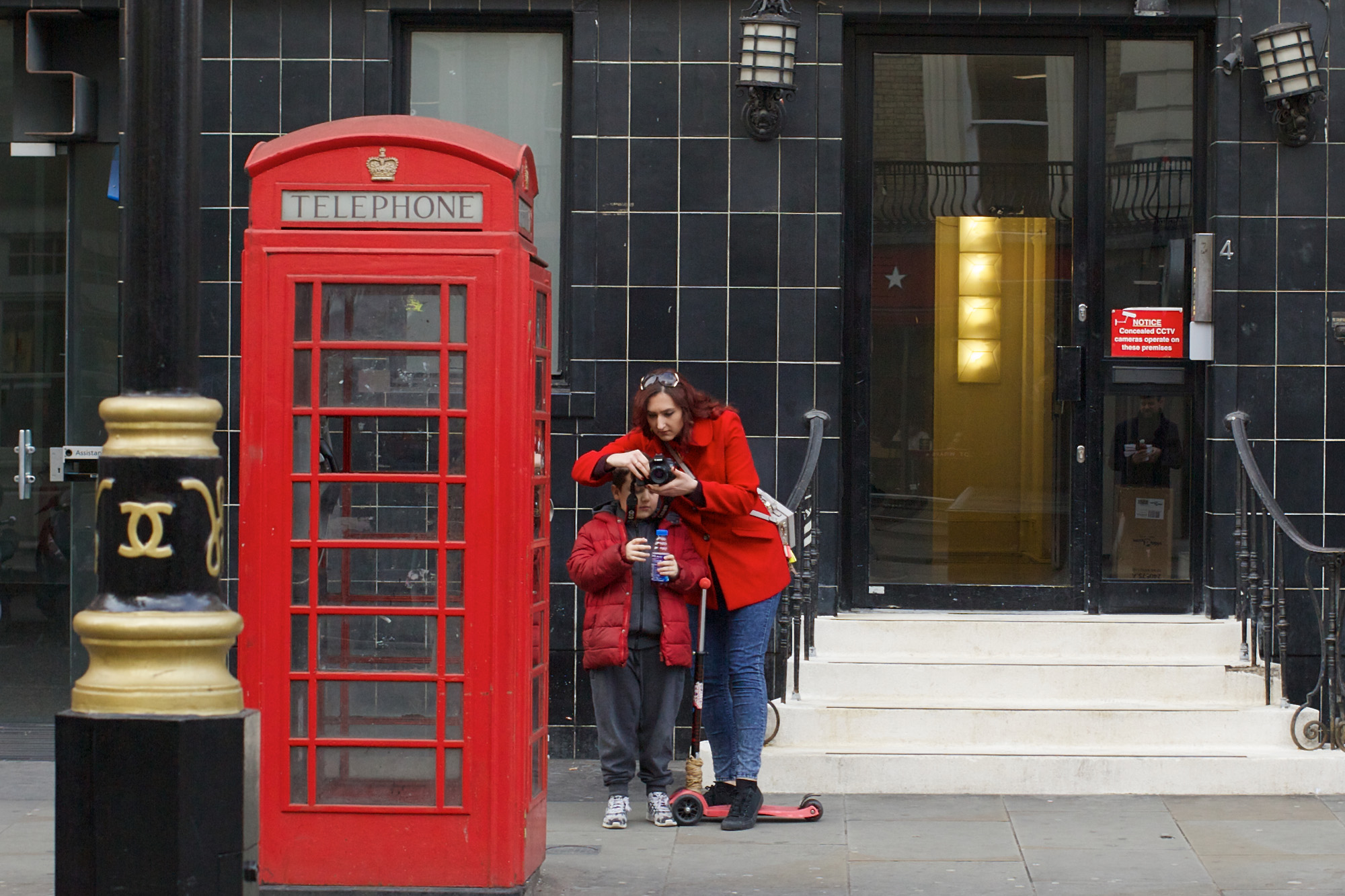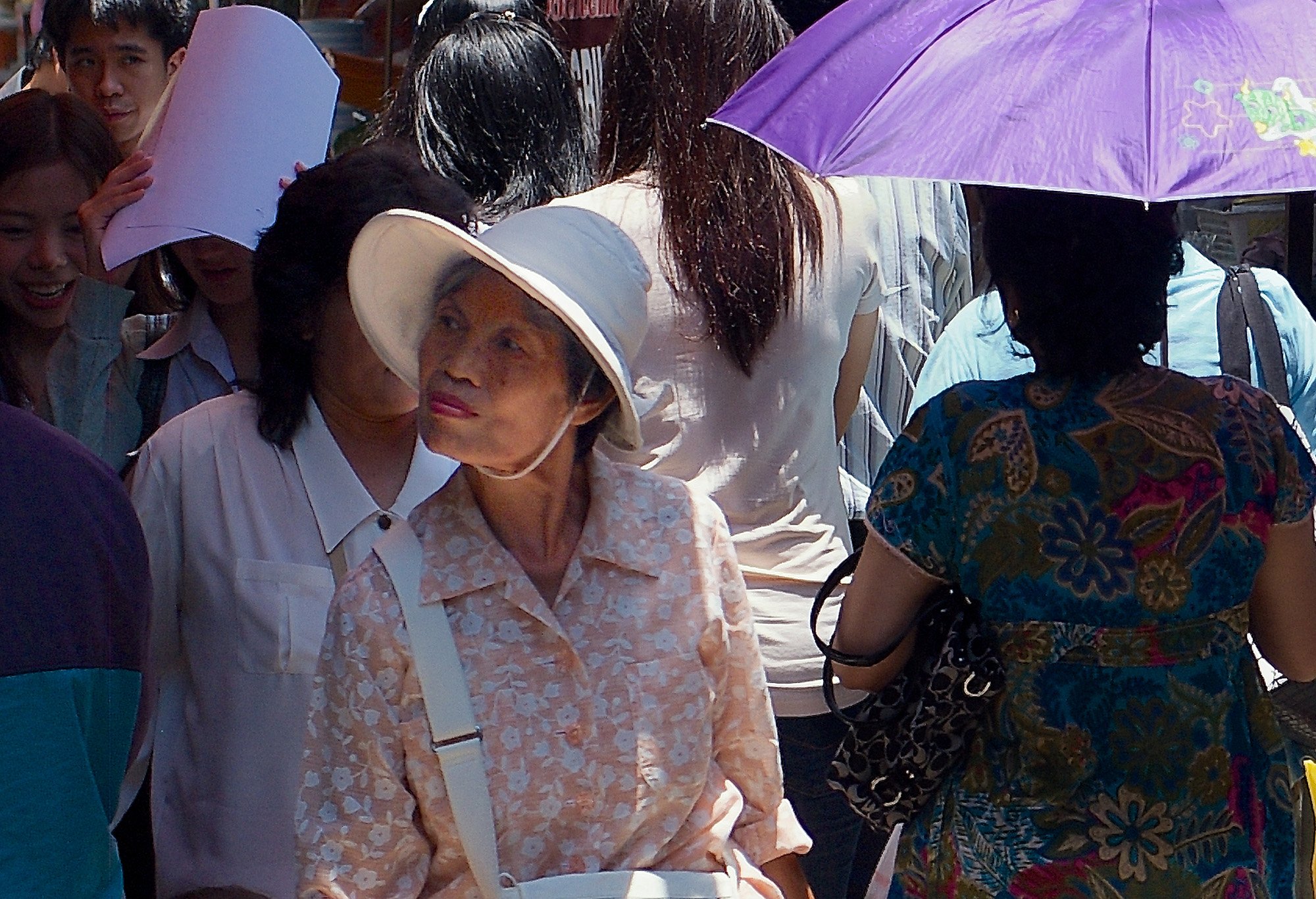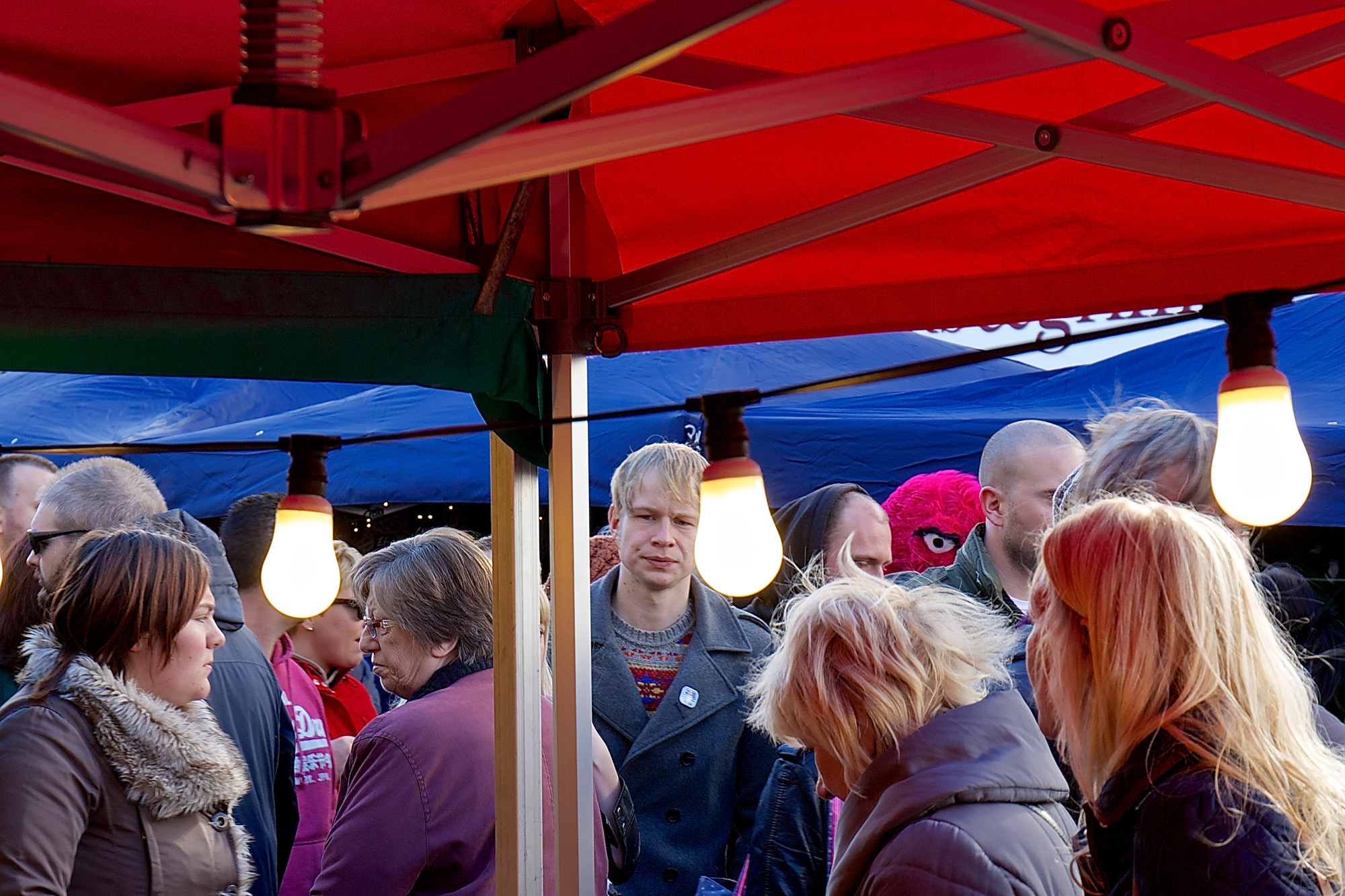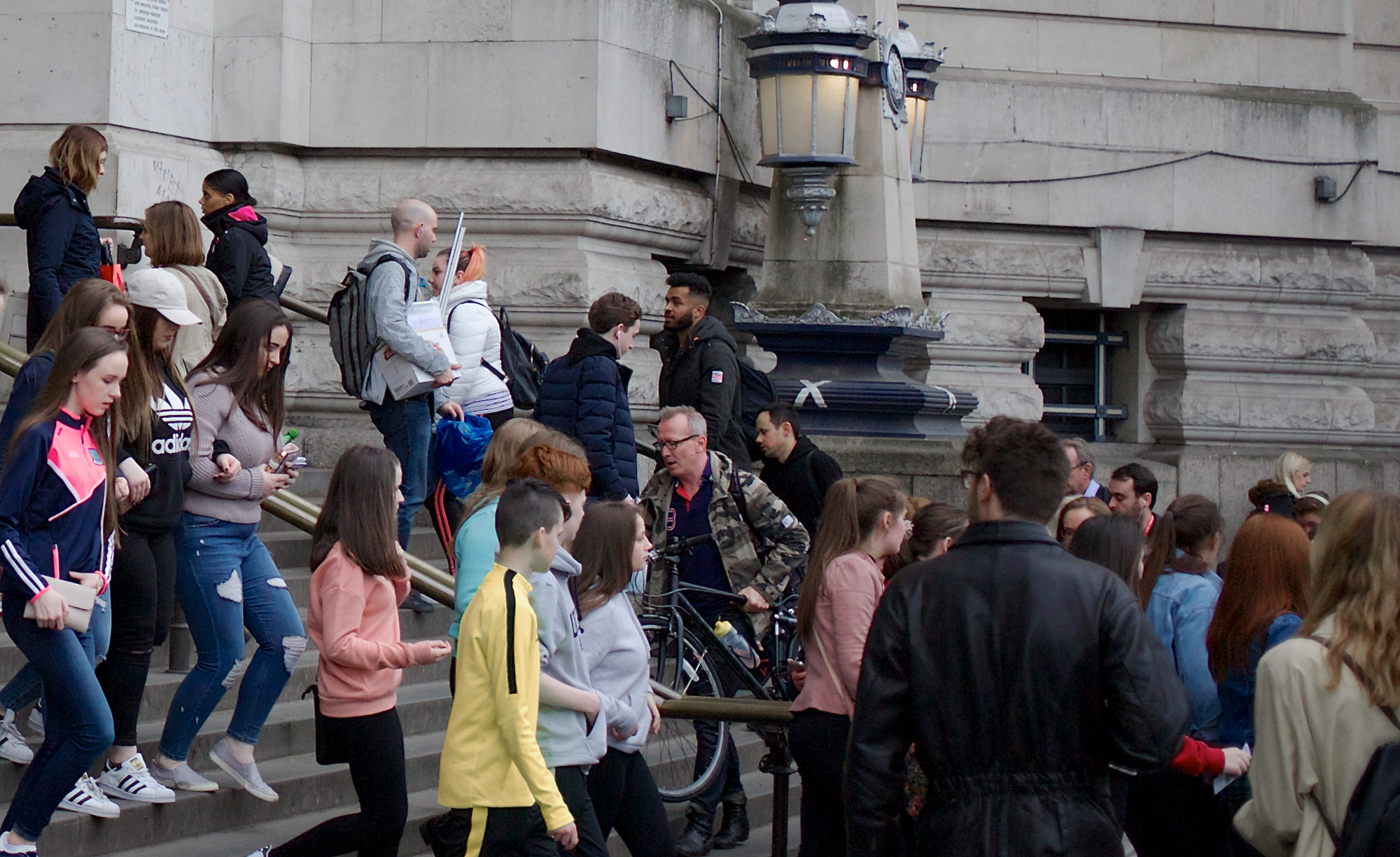Let’s be candid. It’s not easy to take close-up photos of people’s faces when they’re walking towards you in the street. Here are four reasons why that’s so:
1. It’s too rude to shove your camera in a stranger’s face.
2. People will see you taking the shot and react adversely.
3. It’s hard to get focus when a person is approaching you.
4. If you attempt it at a distance you’ll need a telephoto.
Let me take these in turn.
1. It’s too rude to shove your camera in a stranger’s face.
I agree entirely. I’d be cross if someone shoved a camera directly into my face while I’m walking along a public street, wouldn’t you? This really isn’t an acceptable strategy for the street photographer. Apart from being rude, it doesn’t get very good results.
2. People will see you taking the shot and react adversely.
Strangers know when they’re “on camera,” so they look directly into the lens and scowl, or else they look away or take evasive action. Is this the kind of reaction you want to photograph? You can say “yes,” but it’s not candid street photography. The story is no longer about them, it’s about your interference in their lives.
3. It’s hard to get focus when a person is approaching you.
Yes, it’s difficult but not impossible, given the sophisticated focus tracking systems on today’s cameras. However, switching from normal mode to auto-tracking is adding complication to an already complex task. Even an experienced sports photographer, accustomed to auto-tracking, may have a problem trying to implement it on the street.
4. If you attempt it at a distance you’ll need a telephoto.
That’s certainly one option, but there are huge disadvantages to using telephoto lenses in street photography. People will shout “Hey, look, there’s a pap!” and give you a wide berth. (Pap = paparazzo, a freelance photographer who pursues celebrities). It will also stop you from taking shots discreetly, closer to the action.
Most street photographers switch themselves out of “candid mode” and enter what is sometimes called “conversational mode.” This is the tried and tested method of chatting to the subject to ask if they mind having their picture taken. Does it yield great photos? You bet it does! You get interesting faces, perfect framing, sharp focus — the whole works. But it’s not candid.
Once you leave out the candid element in street photography you’ve lost its soul.
So maybe we should simply pack it in, go home, and leave the big facial close-up to the portrait photographer. After all, there are plenty of other compositions to explore. It’s not absolutely essential to include large, candid facial close-ups in your street photography portfolio.
My Solution
Don’t give up too easily! There’s always a way of getting the job done — and I don’t think you need to resort to really sneaky tactics like concealing your camera in a briefcase or under a coat.
I took all the pictures in this blog post by sitting in cafés, enjoying a nice cup of cappuccino in the afternoon. This is frowned upon in Italy where no one drinks cappuccino after lunch. Macchiato yes, marocchino OK, but cappuccino — “stai scherzando!” (You must be kidding!)
The Images
The featured image (above) and the two below make a nice set because I took them all from exactly the same angle, with the same lighting. Looking at them today I keep wondering why I didn’t take more. The light was excellent and I had the ideal position near a corner — one that would probably be occupied by another customer if I returned to the same place.
One snag was the fact that people didn’t often walk close to the window, so I couldn’t get focus consistently. To take these images I had to pre-set the focus and wait for someone to pass at a specific distance from the camera. A second snag was the lack of people in the Suffolk market town I was visiting, not at all like the huddled masses I’m more accustomed to in London.
Nonetheless, I like these images because I so rarely succeed in getting large, candid close-ups of people’s faces. Although they’re not “full frontal” they’re clearly of people walking at speed in front of the camera — without being interrupted by the presence of the photographer.
I tried the same technique in Bangkok, where the late afternoon sun illuminated people’s faces with sufficient intensity to allow me to use a fast shutter speed. When you can’t pan the camera you need to have a fast shutter setting to freeze the movement of people walking past.
I’m not as happy with the result as I am with the pictures I took in England. Maybe it was the coffee! The trouble was, I couldn’t get close enough to the passers-by because of the notice board. Lacking glass, the café made me highly visible so the notice board was important, but still…
There are other faults, too. The colour of the setting sun was a bit too intense and the woman is not in tack-sharp focus. (That’s what can happen when you have the aperture wide open.) Yet for all its faults it’s not a bad image. I like the woman’s quiet strength and dignity. When you get a picture that shows human qualities such as these you know it’s worth keeping.

